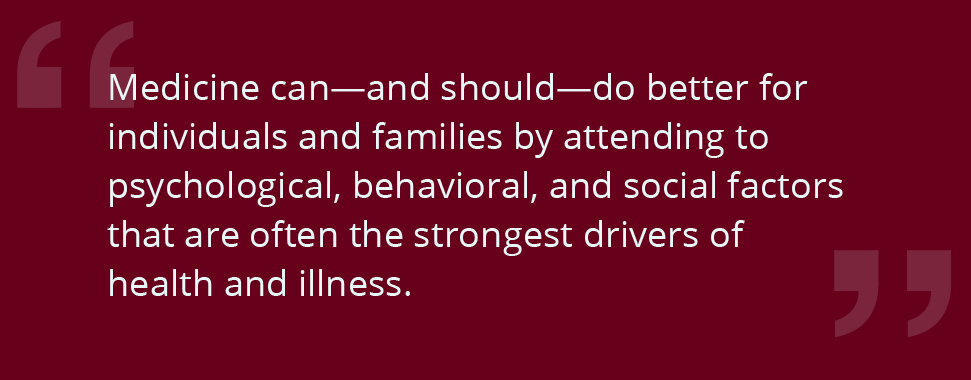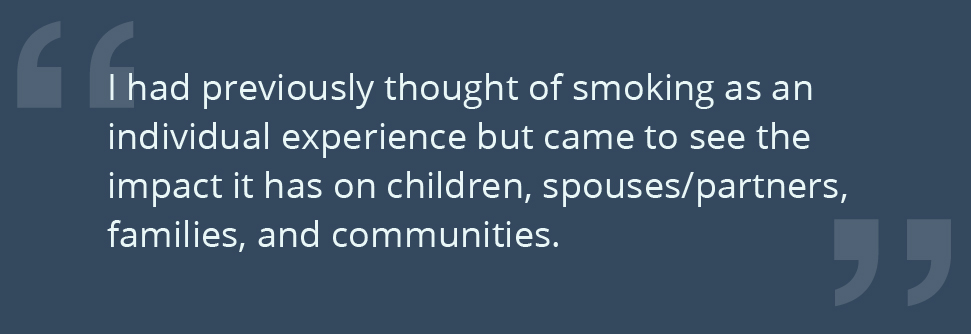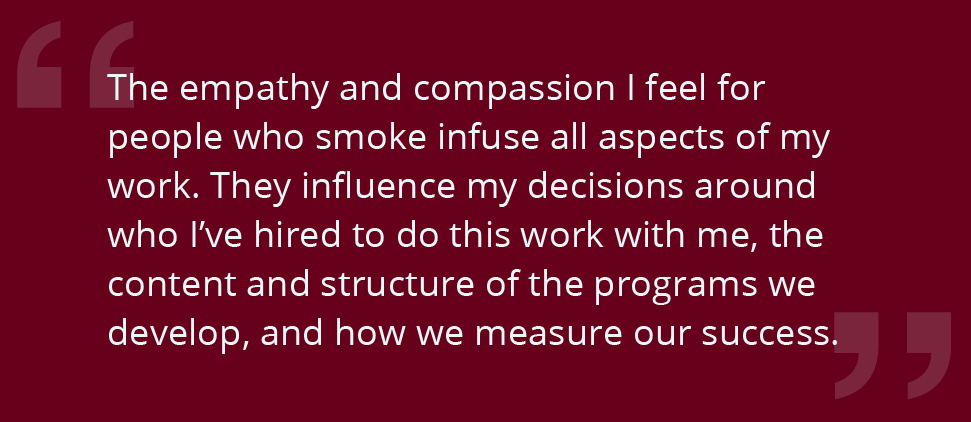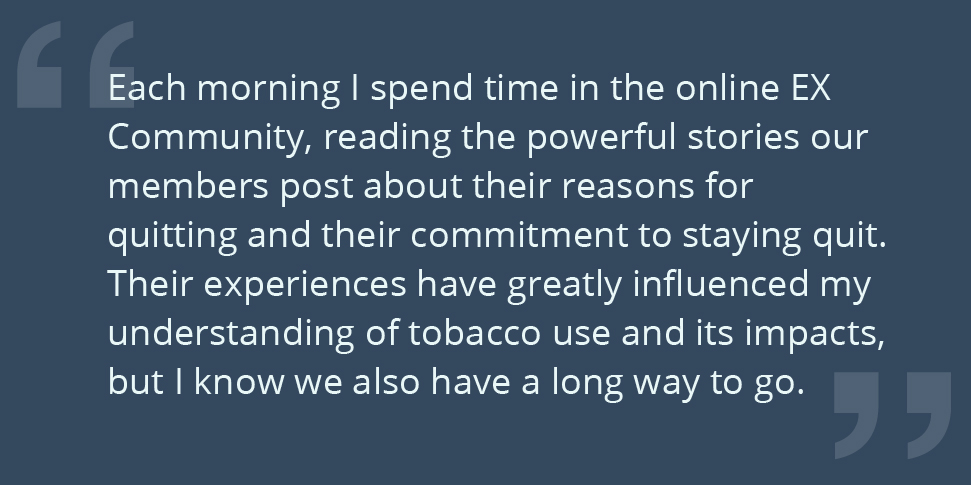In 1992, I was sitting in the cardiac surgery waiting room while my father underwent an aortic valve transplant, knowing I would likely need the same procedure myself someday for the same condition.
We sat for hours, waiting for news that was literally life or death. It was the first time I reflected on the toll that a serious illness can have on a family.
Over the previous years, his health had deteriorated but he continued to ignore the need for surgery. Instead, he clung to his status quo, doing mental gymnastics to convince himself he was fine. During this time, stress mounted in our family, communication broke down, and fear and anxiety were persistent guests at the dinner table.
As I waited anxiously for an update from the surgeon, I wondered why no one on his medical team had addressed his reluctance to have the surgery years earlier. And why no one had offered support for our family. Could his health have been improved any sooner? Could our struggles as a family have been prevented?
The surgery was a success and my father made a full and strong recovery. But the experience during those years planted a seed.
Medicine can—and should—do better for individuals and families by attending to psychological, behavioral, and social factors that are often the strongest drivers of health and illness.
Tobacco users and mental gymnastics
That seed eventually grew into a degree in Clinical Health Psychology where I’ve worked with patients and families to prevent and manage illness. But it’s been my work with people who smoke that has felt the most special.
I recognized the same mental gymnastics my father had done to avoid surgery in their reasons for continuing to smoke. “I’ll quit next year, it’s just not the right time for me” or “I’m fine, I only smoke on weekends.”
I had previously thought of smoking as an individual experience but came to see the impact it has on children, spouses/partners, families, and communities.
I cringe every time I hear people talk about smoking as a “habit” or a “lifestyle choice.”
You only need to spend a few minutes with someone who smokes to hear the heartbreaking ways that tobacco use has taken a toll on their lives and the lives of their loved ones. What may have started as a fun, frivolous way of fitting in or coping with stress soon turned into the relentless avoidance of withdrawal symptoms. It’s rare to find someone who talks about smoking making them feel legitimately good.
Imagine:
- feeling jittery, irritable, sad, or helpless every 2 to 3 hours.
- anxiously checking your purse or pocket to make sure you have a pack of cigarettes with you.
- walking 5 miles at 3 a.m. to the closest minimart to get cigarettes to deal with cravings.
Most people who smoke or use some other form of tobacco talk about feeling “trapped” and “stuck” because of the tenacious hold that nicotine has on them. They feel lectured by non-smoking partners and spouses, ashamed to admit another failed quit attempt to friends, and ostracized in the smoke-free places they work and play.
Carving out new ways to help people stop smoking
The empathy and compassion I feel for people who smoke infuse all aspects of my work. They influence my decisions around who I’ve hired to do this work with me, the content and structure of the programs we develop, and how we measure our success.
Those qualities also inform the research that I’ve done, which started early in my career, with a particular focus on technology-based tobacco cessation interventions.
Although the internet wasn’t in widespread use when I started, I saw its potential for making a difference.
I’d led quit-smoking groups for several years and seen dozens of people who skipped group because they couldn’t get a ride or had childcare issues. Many who did show up were too uncomfortable or shy to share their experiences.
Some of the early online platforms were seeing success in providing support when smokers needed it, for as long as they wanted it. People from all walks of life and from across the country could connect anonymously and share more openly.
Because of this anonymity, it leveled the playing field and allowed people to connect around a shared experience of tobacco addiction without things like ability/disability, income, education, and appearance getting in the way. And family members could be part of the conversation, too.
I’m proud of the my colleagues and I have done over the years showing that people who get connected in an online support community are more likely to quit successfully. This kind of real-time, sustained access for treatment is a much more logical fit for treating tobacco dependence than time-limited treatment modalities.
Learn more about the field-leading research behind the EX Program.
My journey at Truth Initiative
I came to Truth Initiative 13 years ago to bring that science to the digital tobacco cessation programs that we deliver nationally in collaboration with Mayo Clinic as part of our public health mission.
Tragically, despite all we know about why and how to quit smoking, it remains the leading cause of preventable death and disease in this country. Secondhand smoke is still a leading cause of asthma, ear infections, and respiratory infections among children. Among children 6 to 11 who live with smokers, up to a third of school absences are due to household smoking, resulting in lost wages for families and decreased productivity for employers.
It doesn’t have to be this way.
Each morning I spend time in the online EX Community, reading the powerful stories our members post about their reasons for quitting and their commitment to staying quit. Their experiences have greatly influenced my understanding of tobacco use and its impacts, but I know we also have a long way to go.
That’s why we will continue to conduct rigorous research and develop innovative ways to help people stop smoking that benefit not just those who are quitting tobacco, but their families, too.






